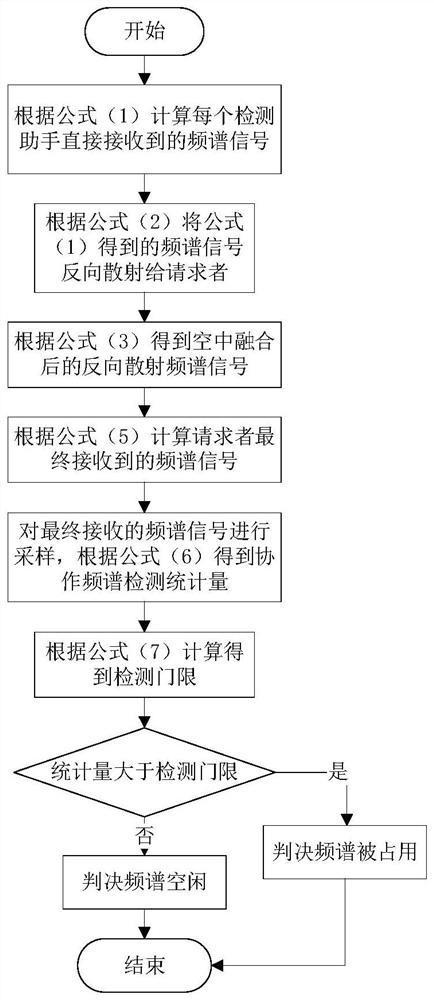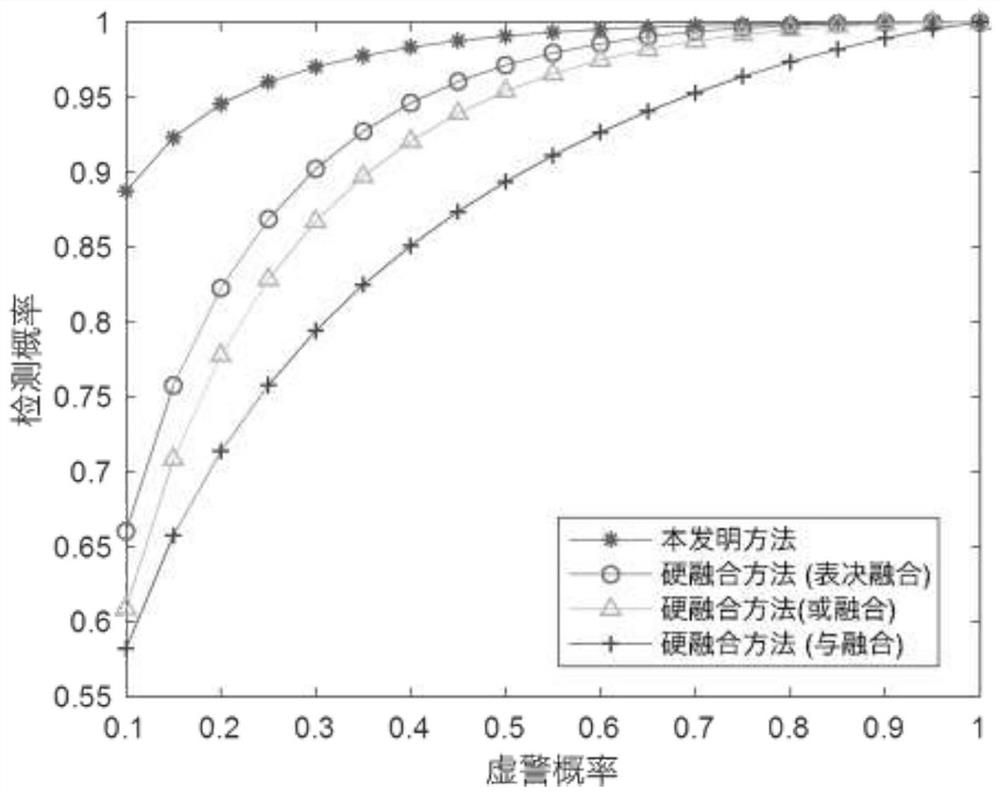A Cooperative Spectrum Detection Method Based on Backscatter and Over-the-Air Computing
A technology of backscattering and spectrum detection, applied in the field of communication, can solve problems such as long data processing delay, low computing efficiency, complex fusion of multi-bit spectrum data, etc., achieve network resource saving, save network channel resources, and ensure information timeliness Effect
- Summary
- Abstract
- Description
- Claims
- Application Information
AI Technical Summary
Problems solved by technology
Method used
Image
Examples
Embodiment
[0069]In an office building covered by B5G cellular IoT, before a mobile user accesses a spectrum, it first needs to detect whether the spectrum is free with the assistance of other devices. Therefore, using the method of this patent invention, the mobile user acts as a spectrum detection requester, and N=10 smart devices are randomly distributed around the requester as backscattering devices. First, according to step (1.1), all backscatter devices use backscatter to reflect the received signal of the spectrum to the requester; then based on air calculation, according to step (1.2), the 10 backscattered spectrum signals are accumulated Secondly, the requester obtains the finally received spectrum signal according to the step (1.3), and carries out M=200 samples according to the step (1.4), obtains the spectrum detection statistic T; subsequently, the requester determines the detection threshold according to the step (1.5) ; Finally, according to the comparison result of the de...
PUM
 Login to View More
Login to View More Abstract
Description
Claims
Application Information
 Login to View More
Login to View More - R&D
- Intellectual Property
- Life Sciences
- Materials
- Tech Scout
- Unparalleled Data Quality
- Higher Quality Content
- 60% Fewer Hallucinations
Browse by: Latest US Patents, China's latest patents, Technical Efficacy Thesaurus, Application Domain, Technology Topic, Popular Technical Reports.
© 2025 PatSnap. All rights reserved.Legal|Privacy policy|Modern Slavery Act Transparency Statement|Sitemap|About US| Contact US: help@patsnap.com



